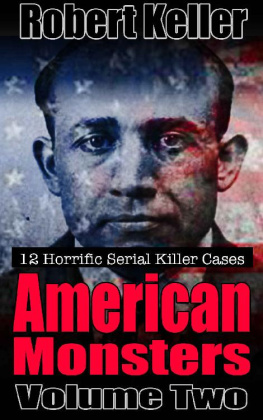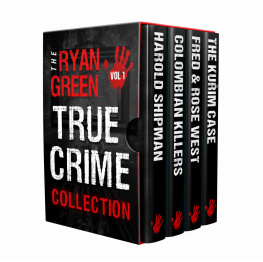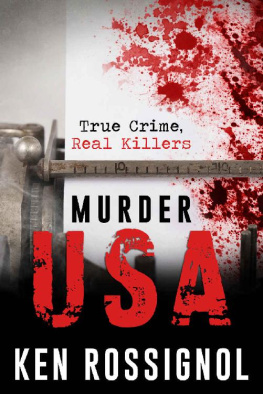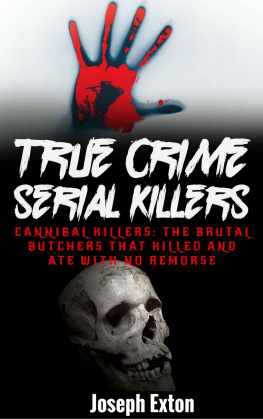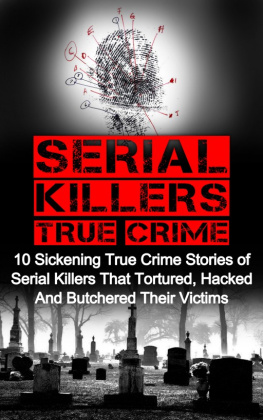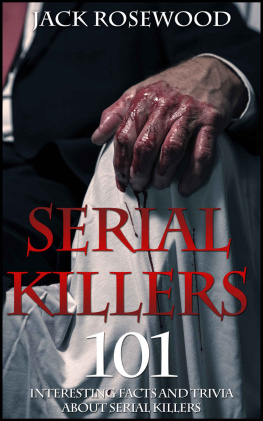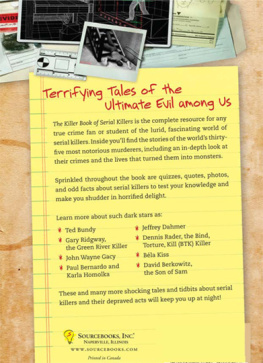TRUE CRIME CHRONICLES
Volume Two
SERIAL KILLERS, OUTLAWS, AND JUSTICE
REAL CRIME STORIES FROM THE 1800s
Commentary by New York Times Bestselling Author & former Detective
MIKE ROTHMILLER
WildBluePress.com
TRUE CRIME CHRONICLES Volume Two published by:
WILDBLUE PRESS
P.O. Box 102440
Denver, Colorado 80250
Publisher Disclaimer: Any opinions, statements of fact or fiction, descriptions, dialogue, and citations found in this book were provided by the author, and are solely those of the author. The publisher makes no claim as to their veracity or accuracy, and assumes no liability for the content.
Copyright 2020 by Mike Rothmiller
All rights reserved. No part of this book may be reproduced in any form or by any means without the prior written consent of the Publisher, excepting brief quotes used in reviews.
WILDBLUE PRESS is registered at the U.S. Patent and Trademark Offices.
ISBN 978-1-952225-42-0 Trade Paperback
ISBN 978-1-952225-41-3 eBook
Cover design 2020 WildBlue Press. All rights reserved.
Interior Formatting/Book Cover Design by Elijah Toten
www.totencreative.com
Table of Contents
INTRODUCTION
Welcome to Vol. 2 of the True Crime Chronicles. You will not be disappointed. While researching these books, I learned new details about various criminals, crimes, justice, and punishment during the 1800s. I am positive you had the same experience. I have repeated some of the introduction from Vol. 1 since it is relevant in Vol. 2. It will serve as a quick refresher before the start of your journey into these fascinating stories.
As a former detective of the Los Angeles Police Department, I witnessed the death and destruction caused by criminals of all races, ages, and religions. I saw good families in both the ghetto and upscale neighborhoods torn apart when facing the harsh reality that one of their children engaged in horrendous criminal activity or became a murder victim. Many times, a desperate parent struggling to find an answer as to their childs commission of a serious crime or, as a victim, asked, Officer, do you know why he (or she) would do that? Or, Officer, do you know why they killed my child? Sadly, my answer was nearly always the same, I dont know.
During my research, it became abundantly clear some people then, as today, will readily engage in criminal activity and extinguish a human life as quickly as crushing a cockroach underfoot. The propensity for violence among some will never change.
Vol. 2 presents more of the best crime reporting during the 1800s. You will recognize many of the people and gangs mentioned, such as Billy the Kid, John Wilkes Booth, and Butch Cassidy and the Sundance Kid. However, there are hundreds of hideous criminals time has forgotten. Do you know the story of; Anna Maria Zwanziger, who had a passion for employing poison? Or, the infamous Jack the Ripper or Lizzie Halliday? These criminals were the vilest of society. Many of their lives ended with a hangmans noose or by a bullet. Some managed to escape justice for the remainder of their lives.
These original newspaper stories represent the most accurate and colorful true crime stories of the day. It was a time when criminals were viewed criminals, and in most cases, justice was swift and unforgiving.
Much of the gruesome details in these articles could not, and would not be printed today. Political correctness, overzealous attorneys, and current police investigation techniques would not allow the finer details of the crimes to be released. Some will find the terms used to describe various races and individuals shocking and racist by todays standards. Yet, there was a time when the words and phrases used were considered ordinary language. The masses understood the terms, and rarely was an eyebrow raised in righteous indignation.
These reporters were extremely graphic when describing crime scenes and victims injuries because that is what sold newspapers. People then, like today, are drawn to tragedy. We have all witnessed a traffic accident causing a massive slow down as gawkers strain their necks to view the carnage. Or reflect on the popularity of true crime magazines, television, and books.
Remember the first commandment of news reporting; if it bleeds, it leads . All forms of media understand people are fascinated by tragic eventsbe it accidental or by evil intentions. That is why these early crime stories are dramatic, graphic, and compelling. The better the story, the more newspapers sold.
In many cases, these stories shed new light on the dramatic effect the passage of time has on the truth. With the retelling of an event or an individuals life over generations, accurate history invariably transforms into what people know today. With the invention of television and movies, tales of the old west nearly always stereotyped Native Americans as ruthless, uncivilized killers, while glorifying the white Indian fighters and cowboys. That wasnt always the case.
As a historian, in some instances, I have combined articles to tell as much of a complete story as possible, and I added my commentary as needed to bring more factual details to the story. In other cases, one article told the entire story.
I have not altered the context of these stories. The punctuation remains 99% untouched, except when I added a comma for easier reading. In a few instances, I corrected misspellings. I did this sparingly. When I grouped articles mentioning the same individual, there are times when names are spelled differently. That was not an uncommon error during those times. A reporter heard the name and spelled it according to the best of their ability, or the typesetter erred.
Also, the formatting of the story remains untouched. To make such unnecessary changes would be to alter history and do a disservice to these early crime reporters and the record.
As you experienced in Vol. 1, these books resurrect astonishing accounts of true crime and will take you on a journey to when these stories captivated a nation. Imagine yourself accompanying these reporters at the crime scenes, interviewing witnesses, and composing the stories. These are their firsthand experiences.
Unfortunately, newspapers at the time rarely listed a reporters name. As with lengthy and detailed accounts of today, I believe more than one person contributed to some of these stories. I would have acknowledged the reporters if known.
As I pondered the crimes and punishment of the 1800s, it was abundantly clear human nature has not changed. Money, love, hatred, religious beliefs, disrespect, and insanity are all motivators for committing a crime.
Dedicated to Nancy
SERIAL KILLERS
JACK THE RIPPER
The
Whitechapel Murders
London
AUTHORS COMMENTARY
In 1888, a serial killer nicknamed Jack the Ripper terrorized the districts of Whitechapel, Spitalfields, and Aldgate on Londons East Side. Whitechapel was considered an undesirable district by the refined, upper-class Londoners. It was an area where prostitutes and other dubious individuals lived, worked, and engaged in criminal enterprises. In America, Whitechapel would be considered a slum or ghetto.
During a few weeks in 1888, several female prostitutes were brutally murdered and their bodies mutilated. Some were disemboweled, some had their breast cut off, and some were nearly decapitated from a deep gash to their throats. If time permitted, the Ripper would skillfully employ a knife to mutilate the victims face and other parts of the body. Some speculated his keen ability to mutilate the body proved he had anatomical knowledge, perhaps medical training. Others believed his skill with a knife was the result of working in a slaughterhouse killing and dissecting animals for consumption. And some speculated the Ripper was part of the United Kingdoms royal family, which accounted for no person charged with the crimes.



